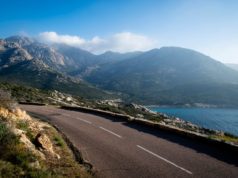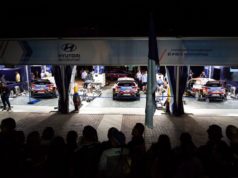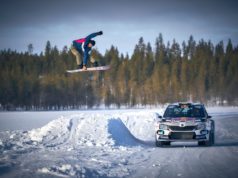Come rain or shine, grass or gravel, snow or sand, the Range Rover Sport SVR delivers devastating pace.
Merging legendary all-terrain capability with 550PS V8 power and advanced traction technology provides Land Rover’s fastest vehicle with unique real world performance.
Since going on sale in Spring 2015, the Range Rover Sport SVR has showcased the abilities of Jaguar Land Rover Special Vehicle Operations. This model contributed to more than 285,000 second-generation Range Rover Sports delivered to customers around the world since its launch in 2014. Acceleration of only 4.7 seconds from 0-100km/h is attractive. But the official figure only scratches the surface of the Range Rover Sport’s capability…
When the perfect traction offered by clean, dry asphalt isn’t available, most sports cars immediately suffer from a lack of grip, stability and performance. But no sports car has the benefit of Land Rover’s legendary all-terrain know-how.
In this unique test the SVR completes the 0-100km/h sprint on standard fit Michelin 275/45 R21 All Season Tyres on everything from asphalt and grass to snow and sand, using Land Rover’s innovative Terrain Response 2 technology
The intelligent system automatically selects the appropriate driving mode to suit traction conditions including. The modes are General Driving, Dynamic, Grass/Gravel/Snow, Mud and Ruts, Sand and Rock Crawl. The driver can also use a simple rotary controller on the centre console to choose a specific mode.
The times recorded are a testament to the Range Rover Sport’s inherent capability. On a notoriously slippery wet grass surface, the 0-100km/h time increased by only 0.8 seconds. Even on Sand the benchmark sprint took only 5.5 seconds.
| Terrain | Mode | 0-100km/h time |
| Asphalt | Dynamic | 4.7 seconds |
| Grass | Grass, Gravel and Snow | 5.5 seconds |
| Gravel | Grass, Gravel and Snow | 5.3 seconds |
| Snow | Grass, Gravel and Snow | 11.3 seconds |
| Mud | Mud and Ruts | 6.5 seconds |
| Sand | Sand | 5.5 seconds |
The Range Rover Sport SVR’s first challenge was the start-finish straight at Rockingham Motor Speedway in Corby, UK. In Dynamic mode, Terrain Response 2 sharpens throttle response and changes gear at higher revs. It also stiffens the Continual Variable Damping function within the vehicle’s Anti-Roll Control technology to reduce body roll. With all of these factors optimised, the Range Rover Sport SVR blasted from 0-100km/h in 4.7 seconds.
In the second test, the high-performance SUV tackled one of the most challenging surfaces any driver will encounter: wet grass. In Grass/Gravel/Snow mode the throttle response is softened to prevent loss of traction and gear changes are smoother and quicker. The Traction Control System also intervenes earlier to prevent tyre slip. The central differential is preloaded to optimise off-the-line performance. Land Rover Experience East of England provided the perfect setting for this challenge. The Range Rover Sport SVR recorded a breath-taking 0-100km/h time of 5.5 seconds.
A quarry provided the ideal gravel surface, where the Range Rover Sport SVR’s inherent traction came to the fore
With the vehicle systems optimised to suit the loose surface, it registered 5.3 seconds.
To find snow the Range Rover Sport SVR headed to Jaguar Land Rover’s winter test facility in Arjeplog, Northern Sweden. Here, the optimised settings and all-wheel drive system helped the SVR complete the sprint on a combination of snow and ice in 11.3 seconds.
The next switch of the Terrain Response 2 dial was to select Mud and Ruts mode. In this setting the air suspension is raised. The Traction Control System allows controlled tyre slip to provide better traction in slippery conditions. In typically British surroundings at one of Land Rover’s all-terrain testing facilities, the performance SUV logged a 0-100km/h time of 6.5 seconds as its intelligent four-wheel-drive technology came into its own.
Pendine Sands at Carmarthen Bay in South Wales has a linkto speed ever since hosting the first world land speed record run took place there in 1924. That made it perfect to test the next setting on the Terrain Response 2 dial: Sand.
Selecting Sand mode sharpens the vehicle’s accelerator responses to allow a quick build-up of engine torque. The vehicle also holds onto gears for longer and locks the central differential to help maintain momentum. The result of this technological wizardry was a 0-100km/h time of 5.5 seconds.
The final mode on the Terrain Response 2 dial called for something different
Rock Crawl is designed to assist drivers when negotiating rocky environments. It works in conjunction with the Low Range transmission in keeping with the low-speed nature of the challenge posed by large rocks and boulders.
Rock Crawl mode softens the accelerator response to mitigate against sudden movements and provide maximum driver control. It also raises the air suspension, to optimise ground clearance. Using Terrain Response 2 the Range Rover Sport SVR scaled the rocky 32 per cent incline at the test facility with ease.
































